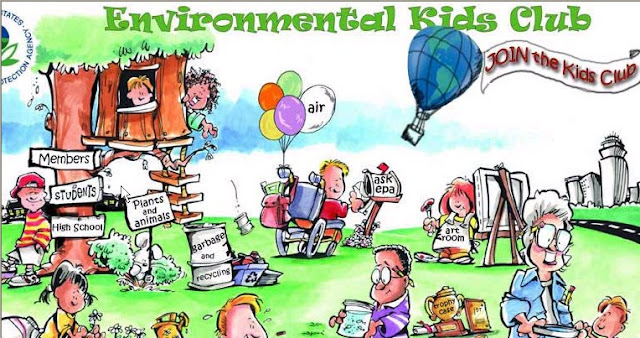TASK : WEEK 3
( (a) Identify the theory behind communicative language teaching approach.
Based on the article of Communicative Language Teaching by Nina Spada, CLT is an approach to L2 teaching where it is a meaning-based and learner-centered approach. Here, the fluency is being emphasized more compared to the accuracy of the language or in other words, it is mainly focus on the ability of the students to understand and produce messages and not the teaching or correction of language form. Other than that, there is also other view that purpose CLT as primarily meaning-based which includes both the fluency and accuracy aspect.
The audio-lingual method is an oral-based approach which is based on the behavioral psychology (Skinner). In addition, it is used in the language learning where it gives attention on the inductive learning of grammar. The learning is conducted through the activities that involve the students to do repetition, practice and memorization. This method will drill the students in the use of grammatical sentence patterns. For example, dialogue activities which can be carried out by the students in form of imitation and repetition. By conducting this activity, the students will be able to use the target language communicatively.
Furthermore, according to Hymes’ theory the knowledge of the rules of grammar (linguistic competence) and the knowledge of the rules of language use (communicative competence) gives obvious impact on CLT. According to Hymes’, the focus in L2 teaching is through the accurate use of grammatical forms. Besides that, there are also several components of abilities that the learners need to require which is (1) linguistic competence; (2) sociolinguistic competence; (3) discourse competence; and (4) Strategic competence.
· Linguistic competence: the knowledge of grammar and vocabulary.
· Sociolinguistic competence: the ability to say the appropriate thing in a certain social situation.
· Discourse competence: the ability to start, enter, contribute to, and end a conversation, and the ability to do this in a consistent and coherent manner.
· Strategic competence: the ability to communicative effectively and repair problems caused by communication breakdown.
(b) State the implications of communicative language teaching towards materials development.
(c) Locate principles supporting CLT within the KBSM English Language Curriculum and F1 English Language Syllabus.
Aim of KBSM English Language Curriculum:
The syllabus aims to extend learners’ English language proficiency in order to meet their needs to use English in certain situations in everyday life, for knowledge acquisition, and for future workplace needs.
By referring to the KBSM English Language Curriculum, there are several objectives that support the CLT that are:-
By the end of their secondary school education, learners should be able to:
· form and maintain relationships through conversations and correspondence; take part in social interaction; and interact to obtain goods and services;
· obtain, process and use information from various audio-visual and print sources, and present the information in spoken and written form;
· listen to, view, read and respond to different texts, and express ideas, opinions, thoughts and feelings imaginatively and creatively in spoken and written form;
Principles that support CLT:-
(1) form and maintain relationships through conversations and correspondence; take part in social interaction; and interact to obtain goods and services:
· 1 principle: promotes cooperative and collaborative learning
Through the activities that involves conversation; the students will eventually interact with each other and give opinions on the topic that is being talk about. Here, the students not only able to express their idea on certain things but they also will learn on how to give a right response. For example, in the role-playing activities where students can ask each other questions regarding certain topic (e.g. family or friend) where during this process, they will ask questions and respond politely. Moreover, through this activity the students also practice the sociolinguistic competence. In addition, the students also will collaborate with each other in order to make the process of communication of the target language can be carry out successfully. Thus, teacher needs to be the facilitator during the learning activities and promotes communication among students.
· 2 principal: practice of using the language
- As the students get involves in the interaction process obtaining the goods and services, they will be exposed to discourse competence. Here, they will learn to start, contribute to, and end the conversation on the topic being talk about. The students will start to learn this in a consistent and coherent manner as they will take turn in order to participate in the conversation. Moreover, they also will be taught on how to ask questions and responds in a polite manner whenever they want to make enquiries.
- Apart from that, the students also will learn the linguistic competence as they get involves in activities such as writing simple instruction or simple invitation. Here, the students usually will participate collaboratively and at the same time they will learn on how to use the simple grammar and vocabulary.
· 3 principal: focus on form
- It is an approach to explicit grammar teaching, emphasizes a form-meaning connection and teaches grammar within the contexts and through communicative task. Thus, it is very important for the teacher to find activities that is related to their real life situation so that they will understand the context more easily. Here, teacher should encourage the students to express their idea by making the students get involve in interaction and focus more on the meaning and allow the learners to figure out the rule themselves naturally as they having a conversation with each other. During the activity, the students eventually will communicate by negotiation of meaning and gives feedback as well.
(2) obtain, process and use information from various audio-visual and print sources, and present the information in spoken and written form:
· 1 principal: input needs to be rich
- The activities that involve the use of authentic materials are very essential to reflect real-life situations and demands. Thus, teacher should design activities that use various audio-visual and print resources for the learning. For example by using audio-visual such as videos, the students not only will listen to the spoken texts but they also can take a look at the visuals presented in the videos. This is very good as teacher can attract the student’s interest. Moreover, teacher plays an important role in maximizing the use of the target language and this can be done through giving an instruction during the learning. Furthermore, teacher should give students greater amount of input so that they will gains greater information on the target language.
· 2 principal: input needs to be meaningful, comprehensible and elaborated.
- The materials that are used in the activity of the learning should be meaningful and comprehensible to the students so that they can use the language in their real life. Thus, teacher needs to design activity that is authentic. For example, teacher should choose passage that is meaningful and able the students to give view on what the text is all about. Here, the process of learning can be in the form of writing or orally where here the students are encourage to elaborate their thought on what they have learn. That is why; teacher must be able to choose appropriate materials, as the proficiency levels of the students differ.
(3) listen to, view, read and respond to different texts, and express ideas, opinions, thoughts and feelings imaginatively and creatively in spoken and written form:
· 1 principal: promotes collaborative learning
- As the students are exposed to different texts, this can enhance their understanding on different usage of the language. The students will get involves in a group activity where they need to collaborate and interact with each other to complete their task. For example, storytelling activities during the discussion which ask the students to use their own words in order to express their ideas. Here, the process of negotiation of meaning can be seen during the discussion process.
· 2 principal: focus on fluency over accuracy
- As the students express their own ideas, the focus will be on the fluency of the language use. Here, teacher also will emphasize the students with the discourse competence and sociolinguistic competence as the students get involves in the interaction process regarding the topic being discussed.
· 3 principal: learner-centered approach
- Teacher should encourage the students to participate actively in an activity that use the target language which allow them to work on themselves, for example role-play activity that needs the students to cooperate with each other creatively. Thus, by conducting activity that focus on learner-centered, the students able to express their ideas and opinions freely. Moreover, in order for the learner’s linguistic knowledge to be automatic, students’ needs to be put under the real condition or situation of communication.
· 4 principal: provide error corrective feedback
- When the students presenting their works, teachers will either give positive or negative feedback to the students. In order for teacher to make correction on the language used by the students, teacher can used direct error corrective which involved teacher’s help such as providing clues or clarification requests. In addition, error corrective and positive feedback is necessary in support of the learning process. Moreover, during the feedback, the students also will be exposed to the strategic competence that allow them to communicative effectively and repair problems caused by communication breakdown.












